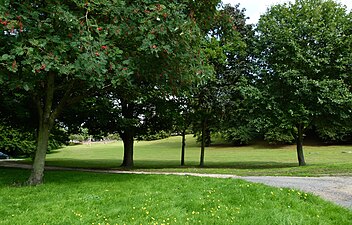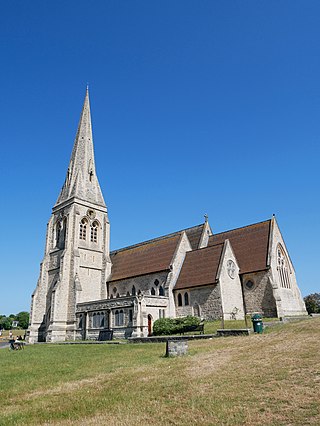
Blackheath is an area in Southeast London, straddling the border of the Royal Borough of Greenwich and the London Borough of Lewisham. Historically within the county of Kent, it is located 1-mile (1.6 km) northeast of Lewisham, 1.5 miles (2.4 km) south of Greenwich and 6.4 miles (10.3 km) southeast of Charing Cross, the traditional centre of London.
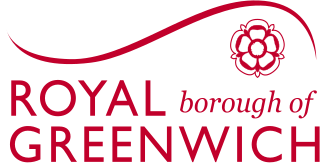
The Royal Borough of Greenwich is a London borough in southeast Greater London, England. The London Borough of Greenwich was formed in 1965 by the London Government Act 1963. The new borough covered the former area of the Metropolitan Borough of Greenwich and most of the Metropolitan Borough of Woolwich to the east. The local council is Greenwich London Borough Council which meets in Woolwich Town Hall.

Woolwich is a town in southeast London, England, within the Royal Borough of Greenwich.

Greenwich is an area in south-east London, England, within the ceremonial county of Greater London. It is situated 5.5 miles (8.9 km) east-south-east of Charing Cross.
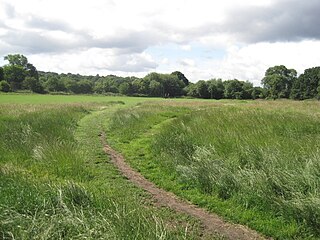
Hampstead Heath is an ancient heath in London, spanning 320 hectares. This grassy public space sits astride a sandy ridge, one of the highest points in London, running from Hampstead to Highgate, which rests on a band of London Clay. The heath is rambling and hilly, embracing ponds, recent and ancient woodlands, a lido, playgrounds, and a training track, and it adjoins the former stately home of Kenwood House and its estate. The south-east part of the heath is Parliament Hill, from which the view over London is protected by law.

Charlton is an area of southeast London, England, in the Royal Borough of Greenwich. It is east of Greenwich and west of Woolwich, on the south bank of the River Thames, 7.2 miles (11.6 km) southeast of Charing Cross. An ancient parish in the county of Kent, it became part of the metropolitan area of London in 1855 and is home to Charlton Athletic F.C. and Charlton House.

Eltham is a district of southeast London, England, within the Royal Borough of Greenwich. It is 8.7 miles (14.0 km) east-southeast of Charing Cross, and is identified in the London Plan as one of 35 major centres in Greater London. The three wards of Eltham North, South and West have a total population of 35,459. 88,000 people live in Eltham.

Woolwich Common is a common in Woolwich in southeast London, England. It is partly used as military land and partly as an urban park. Woolwich Common is a conservation area. It is part of the South East London Green Chain. It is also the name of a street on the east side of the common, as well as an electoral ward of the Royal Borough of Greenwich. The population of the ward at the 2011 Census was 17,499.
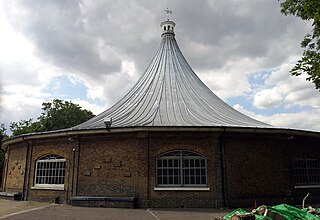
The Royal Artillery Museum, which was one of the world's oldest military museums, was first opened to the public in Woolwich in southeast London in 1820. It told the story of the development of artillery through the ages by way of a collection of artillery pieces from across the centuries.

Woolwich Garrison is a garrison or station of the British Army. Geographically it is in Woolwich, in the Royal Borough of Greenwich. In terms of command, it is within the Army's London District.
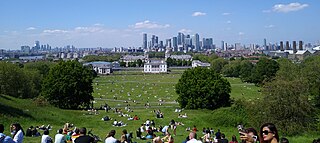
The Royal Borough of Greenwich has over fifty parks and open spaces within its boundaries. They include:

The South East London Green Chain, also known as the Green Chain Walk, is a linked system of open spaces between the River Thames and Crystal Palace Park in London, England. In 1977 four London boroughs and the Greater London Council created this Green Chain of 300 open spaces to protect them from building activity. The four London boroughs are Bexley, Bromley, Lewisham and Greenwich. More recently it has been extended to include sections in Southwark. Many parts of the system are also part of the Capital Ring route.

Charlton House is a Jacobean building in Charlton, within the Royal Borough of Greenwich in south-east London. Originally it was a residence for a nobleman associated with the Stuart royal family. It later served as a wartime hospital, then a museum and library, and is now run by Royal Greenwich Heritage Trust.

Woodlands House is a Grade II* listed Georgian villa, next door to Mycenae House, Mycenae Road, in the Westcombe Park area of the Royal Borough of Greenwich. From 1972 to 2003 the building served as a library and art museum, known as the Woodlands Art Gallery. Today it houses a Steiner School.
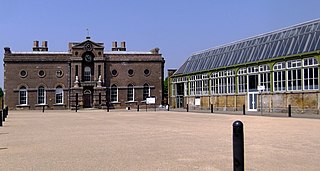
Greenwich Heritage Centre was a museum and local history resource centre in Woolwich, south-east London, England. It was established in 2003 by the London Borough of Greenwich and was run from 2014 by the Royal Greenwich Heritage Trust until the centre's closure in July 2018. The museum was based in a historic building in Artillery Square, in the Royal Arsenal complex, which was established in the 17th century as a repository and manufactory of heavy guns, ammunition and other military ware.
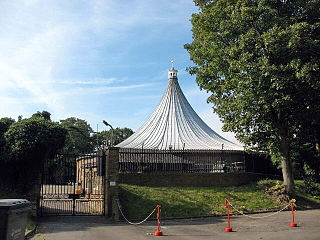
The Rotunda on Woolwich Common, in south-east London, was originally a 24 sided brick rotunda, designed by the Whig architect John Nash. Intended as a temporary structure, it was erected on the grounds of Carlton House, in 1814, for use as an additional reception room for the many events hosted there by the Prince Regent in celebration of the allied victory over Napoleon. The first event held in the wooden rotunda was a magnificent celebration in honour of the Duke of Wellington, in July 1814. The Regent ordered the removal of the rotunda from the grounds at Carlton House, in 1818. John Nash had hoped it would be converted into a church. However, the Regent directed that it be re-erected on Woolwich Common for use as a museum by the Royal Artillery. When the building was re-erected in Woolwich, in 1820, its original architect, John Nash, turned it into a permanent brick structure with a tent-style lead roof, central supporting pillar, decorative cupola and weathervane. In 1973 the Rotunda was designated as a Grade II* listed building.

Maryon Wilson Park is a public park in Charlton, in the Royal Borough of Greenwich in south east London. It is bounded on its northwest side by Thorntree Road; its southern-most, and highest, point is a gateway on to Charlton Park Road.

Royal Artillery Barracks, Woolwich, is a barracks of the British Army which forms part of Woolwich Garrison. The Royal Regiment of Artillery had its headquarters here from 1776 until 2007, when it was moved to Larkhill Garrison.

The Garden house at Charlton House, in the Royal Borough of Greenwich, is a summer house dating from the 1630s. The structure is often attributed to Inigo Jones, though there is no documentary evidence to support this claim. Its original purpose is unknown. In the 20th century, the building functioned as a public lavatory and by the 21st had become derelict and was placed on Historic England's Heritage at Risk Register. As of 2022, the garden house is undergoing restoration. It is a Grade I listed building.

